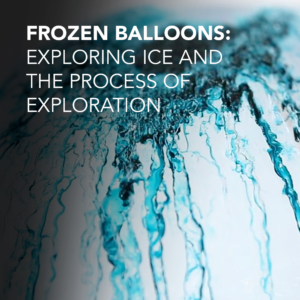Preview:
Going to the “ends of the Earth” takes you to the Arctic and the Antarctic. This activity engages students in sorting picture cards comparing similarities and differences between the Polar Regions in a table-sized Venn Diagram.
Background
The Polar Regions are the regions surrounding the geographic North and South Poles. Both areas experience extreme cold and the ice sheets (Greenland and Antarctica) are found in the Polar Regions. Because they are so cold and remote, many people think they are virtually the same, but even though there are similarities, there are also some big differences. One main difference is that polar bears live only in the Arctic and penguins only in the Antarctic.
The area in the north is called the Arctic and includes most of the Arctic Ocean as well as the northern parts of North America, Europe, and Asia. The Arctic is ocean surrounded by land. The most common definition of “Arctic” is the area within the imaginary circle drawn on the map at 66o34’ N above which the sun does not set on the summer solstice and does not rise on the winter solstice. At the North Pole, the sun rises once each year and sets once each year! Others define the Arctic as the region above the “tree line” where you will find only shrubs and lichens growing. Other researchers define the region as the high latitudes where the average daily summer temperature does not rise above 10o C (50o F) Millions of people have lived here for thousands of years and have adapted well to the frigid temperatures and the long, dark winter nights. There is great diversity of plant and animal species that live on land and in the ocean in the Arctic Region.
The area in the south is called the Antarctic and includes the area south of the Antarctic Circle defined as the imaginary line on the map at 66o 34’ S. As in the north, from the Arctic Circle to the South Pole, the sun does not rise on the winter solstice and does not set on the summer solstice. The Antarctic is a continent surrounded by ocean. Other than scientists and the staff that supports the research, no one lives on the continent of Antarctica, but 30 countries operate science bases including another 35 field research stations. Antarctica is not owned by any country, but is governed by the Antarctic Treaty which was signed by 48 nations and protects the continent for peace and science.






